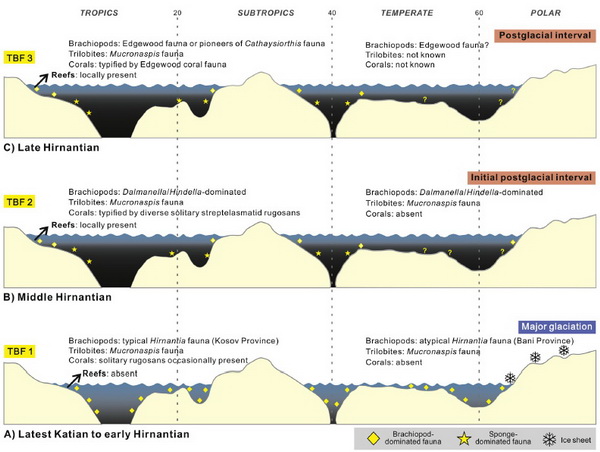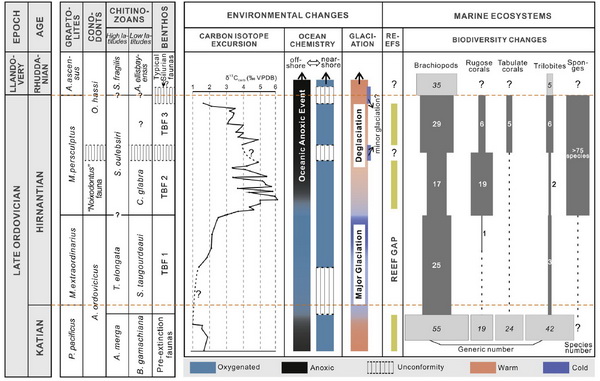The end-Ordovician mass extinction (EOME) was the first of the “Big Five” extinctions of the Phanerozoic. It is widely interpreted as consisting of two pulses associated with the onset and demise of the Gondwana glaciation, respectively, with the second pulse eradicating the distinctive, glacially related Hirnantian benthic biota (HBB). This two-pulse model has become a widely accepted paradigm within which tempo, magnitude, pattern and dynamics of the EOME and the subsequent recovery have been variously interpreted.
Recent investigations in South China, however, indicate an erroneous temporal and causal link between the “HBB” and the Gondwanan glaciation, which, if confirmed globally, will hence underpin a critical reevaluation of the tempo and nature of the EOME.
To further elucidate this key issue, Dr. WANG Guangxu from the Nanjing Institute of Geology and Palaeontology of Chinese Academy of Sciences and his colleagues made a global review of occurrence data of latest Ordovician benthic marine organisms, which reveals that virtually all warm-water benthic assemblages previously assigned to the HBB comprise two distinct and clearly postglacial faunas, both younger (middle and late Hirnantian, respectively) than the cool-water Hirnantia fauna (latest Katian to early Hirnantian).
The newly recognised three Transitional Benthic Faunas (i.e., TBFs 1–3) can be closely tied to graptolite, conodont, and chitinozoan biozonations, the Hirnantian Isotope Carbon Excursion (HICE), and the glaciation, thereby providing an integrated, much higher resolution timescale for understanding the tempo and nature of the EOME.
At such a finer resolution, these authors also postulate a more profound impact of the first pulse of the EOME than hitherto envisaged, as evidenced by opportunistic expansion of the Hirnantia fauna globally and the complete absence of metazoan reefs in its immediate aftermath. They also argue, based on high-quality data from well-documented benthic groups in South China (i.e., brachiopods, tabulate and rugose corals, trilobites, and sponges), that the magnitude of the second pulse of the EOME caused by the deglaciation has been overestimated because the two postglacial faunas (i.e., TBFs 2–3) were part of a subsequent recovery phase of marine ecosystems rather than contributing to biodiversity decline. Thus, they reinterpret the EOME as a single-pulse, rapid event that was followed by a prolonged initial recovery intermittently impeded by climatic shocks through the Hirnantian, prior to the onset of a progressive reestablishment of marine ecosystems during the early Silurian (Rhuddanian and Aeronian) associated with an overall amelioration of climatic conditions.

Models of latitudinal patterns of TBFs 1–3 through the Hirnantian.

A refined integrated Hirnantian stratigraphic framework, against which biotic and environmental changes across the EOME are also shown.
Download:
